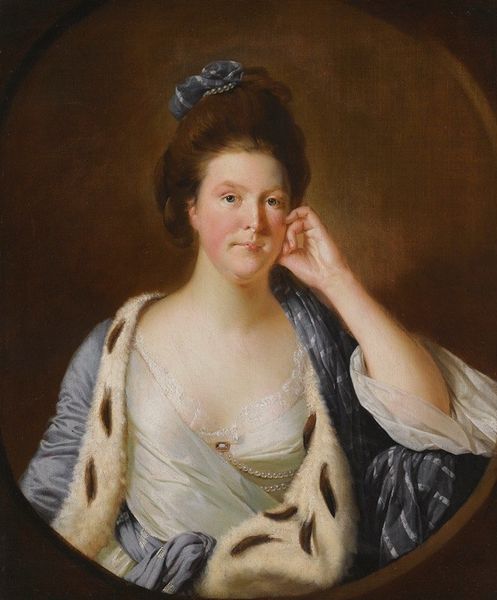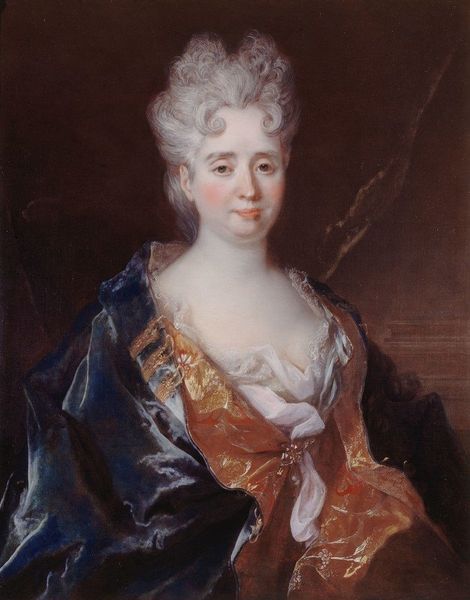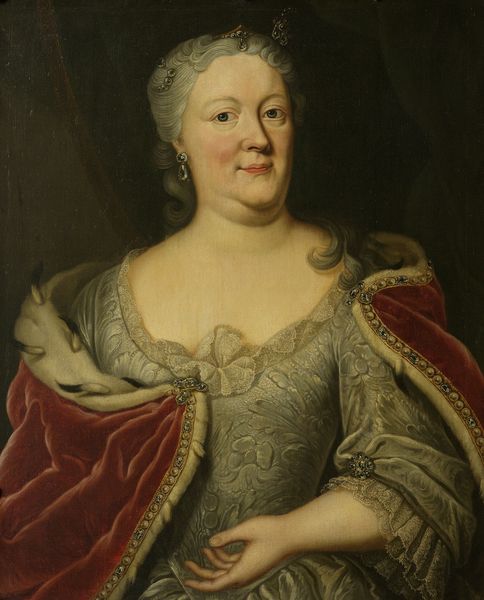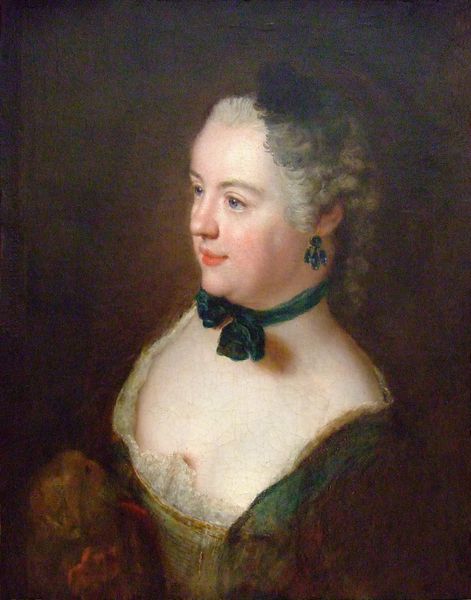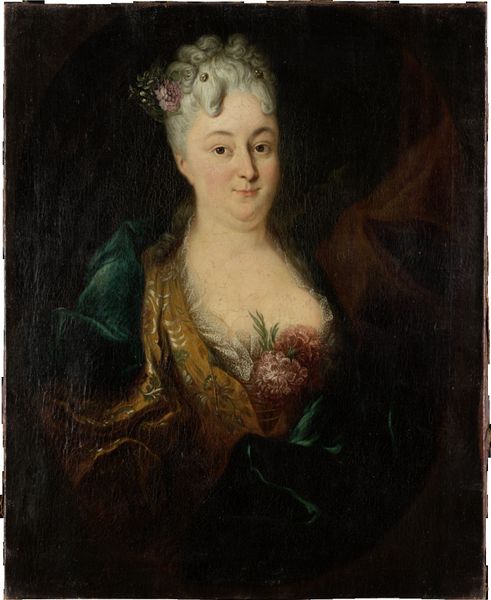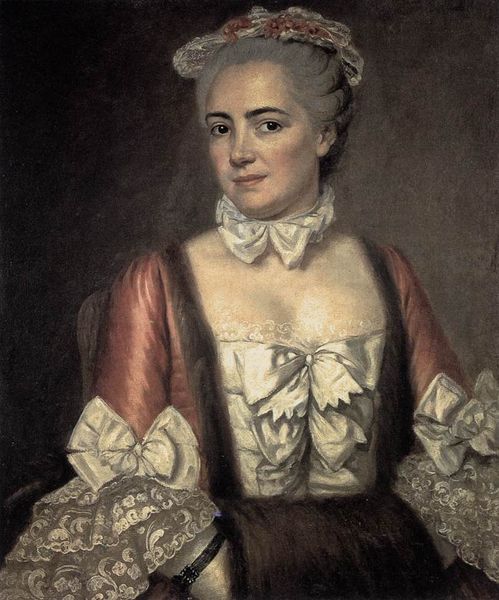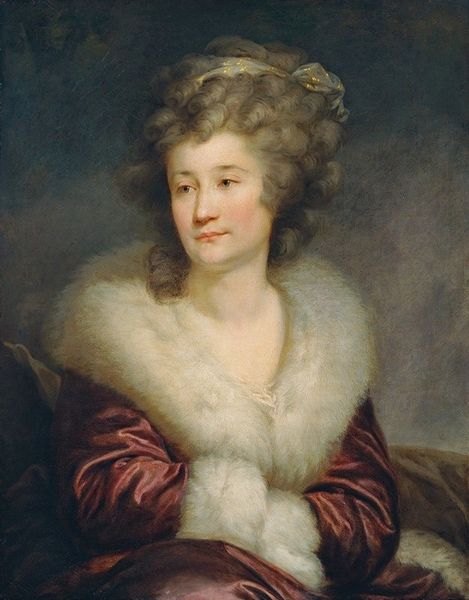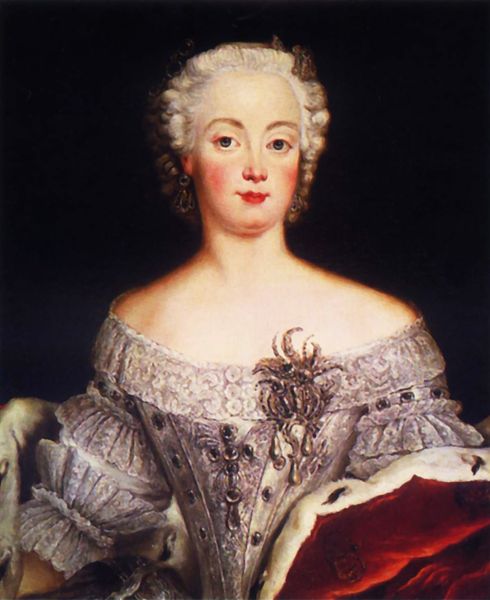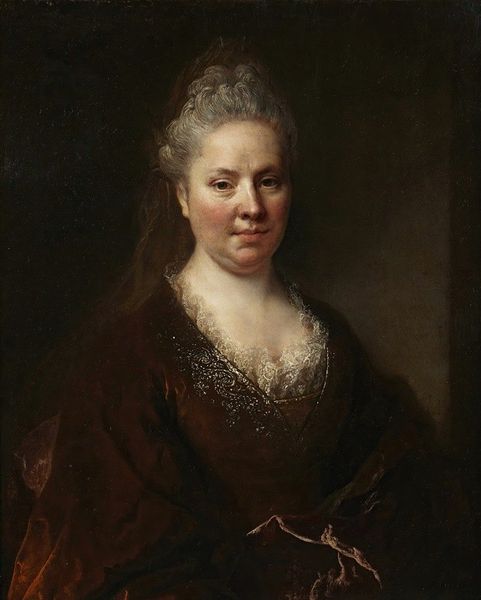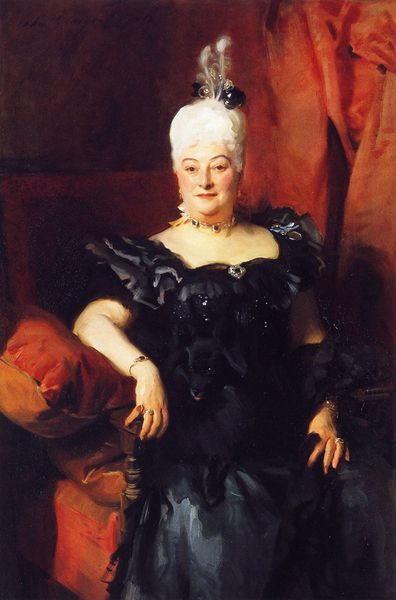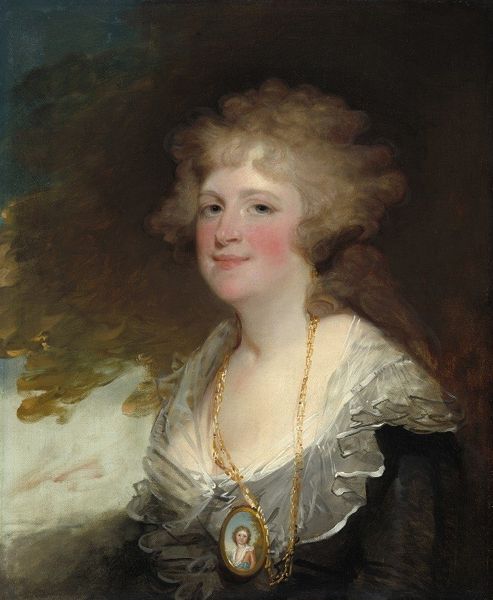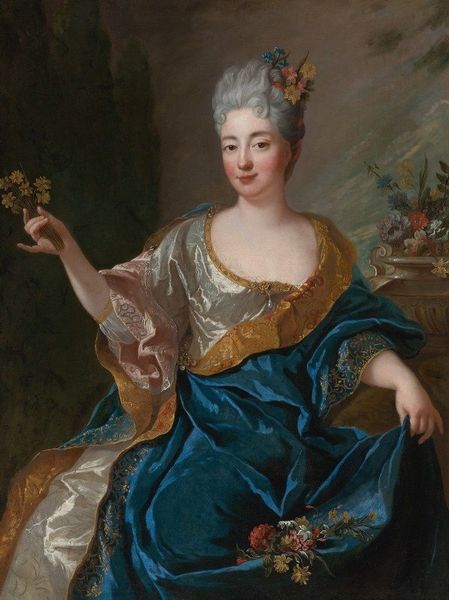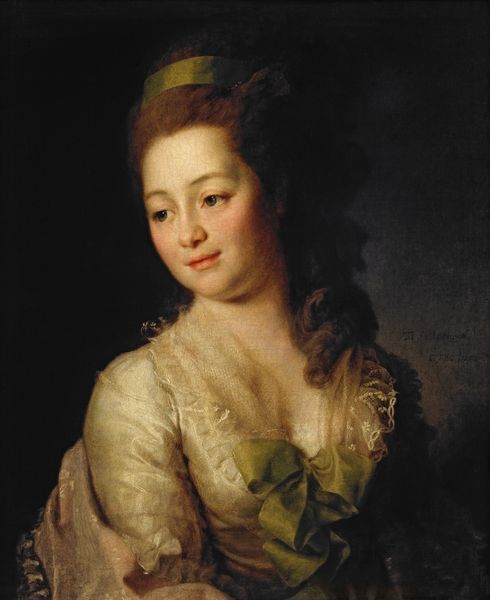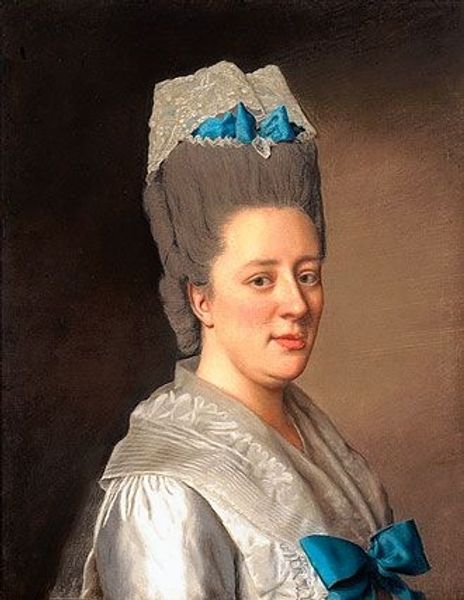
oil-paint
#
portrait
#
figurative
#
baroque
#
oil-paint
#
oil painting
Copyright: Public Domain: Artvee
Curator: Take a look at "Stina Lillie," painted in 1713 by Nicolas de Largillière. This oil portrait practically whispers secrets from the past. Editor: Immediately, I see this deep, quiet opulence. Her skin almost glows, like creamy moonlight. I’m drawn to that rich blue velvet draped in her hands. It's sumptuous, like holding a piece of the night sky. Curator: Velvet does seem to steal the show. Its heavy folds evoke both luxury and mystery, a real signifier of status in the Baroque era. Note the way Largillière captures the light on the fabric. Editor: Absolutely. That sharp light draws me in and yet I'm more curious about Stina herself. It's hard to ignore those direct eyes. I see determination, perhaps, but also a trace of vulnerability. The pearls in her hair contrast nicely with the heavy cloth she holds, so a touch of elegance and sobriety. Curator: Yes! Largillière excelled at conveying not just physical likeness but inner character. Portraits of this period are never 'just' portraits; they're a window into social dynamics and individual aspiration. She embodies that restrained power—this isn't about overt flamboyance, it’s about quiet assurance. Editor: Her gaze does command a bit of power—even though, frankly, the way she grips the fabric seems almost childlike, maybe anxious? Or even innocent? What could this mysterious piece of cloth represent to her? Does it bring comfort? Authority? An emblem to remember? Curator: It's interesting you point out the youthful quality; there's certainly that ambiguity that makes you wonder more. Largillière often included symbolic objects that gave clues to the sitter’s identity or interests. Here, perhaps the cloth, in its striking blue and weighty presence, might signify authority or status conveyed through an inheritance, through family trade, and/or something she personally values or contributes to? Editor: I wonder, I do! Well, walking through that interplay of visual and emotional cues feels more intimate and engaging. It reminds me that even the most formally posed portraits can contain a universe of unspoken stories. Curator: Agreed. Baroque portraits can teach us how visual rhetoric can be used to communicate a powerful narrative, sometimes silent.
Comments
No comments
Be the first to comment and join the conversation on the ultimate creative platform.
